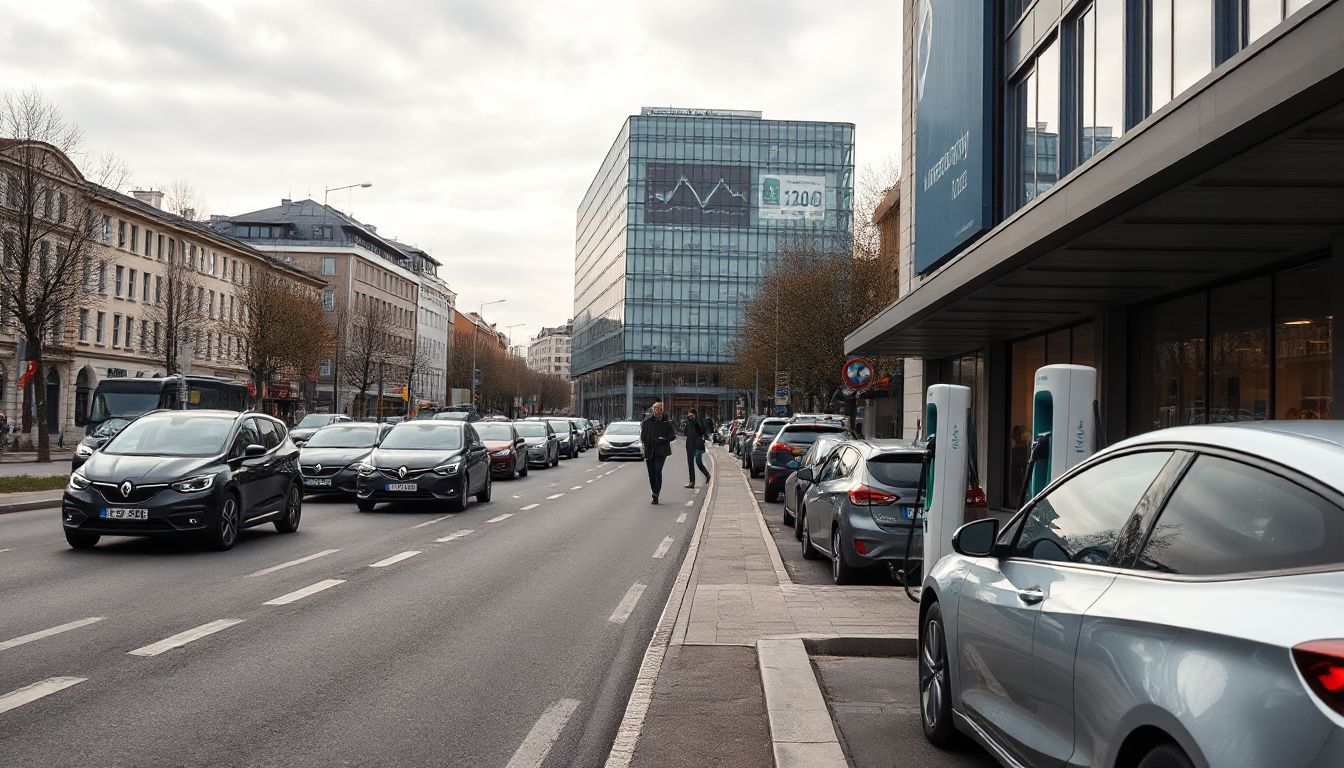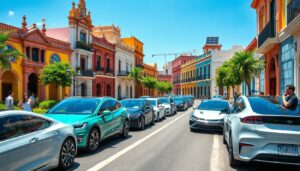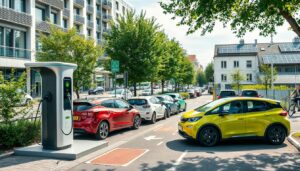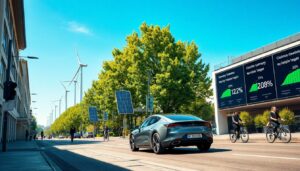Introduction
Germany, a top player in the global electric vehicle (EV) scene, is seeing a surprising dip in EV sales. After years of rapid growth, the recent numbers tell a different story. This decline raises questions: What’s behind this slowdown? And what does it mean for the future of EVs in Germany? With the country’s strong push on clean transportation, understanding this shift is vital for automakers, policymakers, and consumers alike. Let’s look at why EV sales are dropping and what might come next.
Overview of Germany’s Electric Vehicle Market
Historical Growth and Market Size
Germany’s EV market has grown fast over the last decade. In 2019, EV sales made up around 2% of all cars sold. That number skyrocketed to over 15% in 2022. The country now ranks among the top in Europe for electric vehicle adoption. Major automakers like Volkswagen and BMW have invested heavily in electric models. Their efforts helped Germany become a leader in EV technology and sales. But despite this progress, recent data shows a slowdown.
Policy Landscape and Incentives
Germany has long used incentives to boost EV purchases. Subsidies, tax breaks, and regulations pushed consumers to go electric. For example, the government offered up to 9,000 euros in rebates for new EV buyers. But lately, policy changes have created uncertainty. Some incentives are being reduced or phased out, making EVs less affordable. This shift affects consumer confidence and could be a key reason for the recent sales dip.
Infrastructure Development
Charging stations are crucial in encouraging EV use. Germany has expanded its network significantly in recent years. There are now over 35,000 charging points across the country. Still, some areas lack convenient access, especially in rural regions. Long charging times and limited infrastructure in certain spots can make potential buyers hesitant. As infrastructure development slows or stays uneven, this can dampen consumer enthusiasm.
Causes of the Decline in EV Sales in Germany
Market Saturation and Consumer Behavior
Many early adopters already bought EVs. As the market saturates, fewer first-time buyers feel the pressing need to switch. Additionally, some consumers are shifting back to traditional cars due to concerns over range limitations and charging hassle. Perception problems and lack of awareness about new EV models also play a role.
Economic Factors and Cost of Ownership
Rising vehicle prices are a big factor. The cost of EVs has increased recently, partly due to raw material costs like lithium and nickel. Moreover, inflation and economic uncertainties mean people are less willing to spend big sums on new cars. When EVs seem less affordable, demand takes a hit.
Policy Shifts and Regulatory Changes
Recent policy adjustments, such as the reduction of incentives, can scare off buyers. For instance, as subsidies diminish, some may delay purchasing an EV. Regulatory uncertainties, combined with fears about future support measures, dampen enthusiasm for buying now.
Supply Chain Disruptions
Global shortages, especially in semiconductors, affect car production. Many manufacturers face delays and limited availability of EV models. Those longer wait times frustrate buyers and can cause them to turn away from electric options for now.
Real-World Examples and Data
Several automakers have reported declines in EV sales. Volkswagen, Europe’s largest carmaker, saw a drop of about 10% in EV deliveries last quarter compared to the previous year. BMW’s EV sales dipped as well, mainly due to limited model availability. Customer feedback often mentions high prices and difficulty finding charging stations as reasons for hesitation. These real-world examples highlight the tangible impact of current market conditions.
Expert Insights and Industry Perspectives
Comments from Market Analysts
Researchers warn that the recent decline could be a temporary correction after explosive growth. They suggest the market needs stable policies and better infrastructure to recover. Experts believe that if incentives are restored and supply improves, sales could bounce back.
Statements from Automotive Executives
Leaders from German automakers emphasize the importance of innovation. They argue that improving battery technology and expanding charging networks will attract customers. Still, they acknowledge that economic uncertainties hinder immediate growth.
Policy Makers’ Viewpoints
Officials recognize the need to support the EV sector through revised incentives and infrastructure investments. They see potential in expanding support programs that make EVs more accessible and affordable.
Strategies to Revive Electric Vehicle Sales
Enhancing Incentives and Policy Support
Reviving consumer confidence calls for stable, long-term incentives. Policymakers should consider reintroducing subsidies or tax credits that make EVs more attractive financially. Clear policies can reassure buyers that support will continue.
Accelerating Infrastructure Build-out
Expanding charging networks faster—especially in rural and underserved areas—is key. Quick installation of fast-charging stations and portable chargers can ease range anxiety, encouraging more people to choose EVs.
Addressing Consumer Concerns
Educating potential buyers on total cost of ownership is vital. Many still see EVs as expensive upfront, but they overlook lower maintenance costs and fuel savings. Offering flexible leasing options and financing plans can also lower entry barriers.
Innovation and Product Differentiation
Automakers should focus on producing EVs with longer range, better features, and lower prices. Cutting-edge models that address common complaints can sway skeptics and bring new buyers into the fold.
Future Outlook and Market Potential
Despite recent setbacks, the long-term outlook remains positive. Experts predict that over the next five years, EV sales will rebound and grow steadily. Emerging markets and new technology, like solid-state batteries, could transform the industry. Governments and companies need coordinated efforts to unlock this potential fully.
Conclusion
The recent decline in Germany’s EV sales stems from various factors—market saturation, rising costs, policy changes, and supply chain issues. But this slowdown isn’t the end of the story. With targeted efforts, such as strengthening incentives, expanding charging infrastructure, and offering better models, the German EV market can recover. Both government and industry need to team up to create a stable environment that encourages more drivers to go electric. The future of EVs in Germany depends on staying flexible and pushing forward.
Key Takeaways
- Market saturation, higher costs, and policy shifts hurt EV sales now.
- Improving infrastructure and offering attractive incentives can turn the trend around.
- Innovation in vehicle design and financing options are crucial.
- Germany’s EV market still has enormous growth potential if these challenges are tackled wisely.
Act now. Strengthen policies, accelerate infrastructure, and bring innovative EV models to market. The path to full electric mobility in Germany is still bright—just needs the right push.




